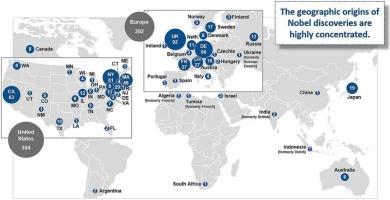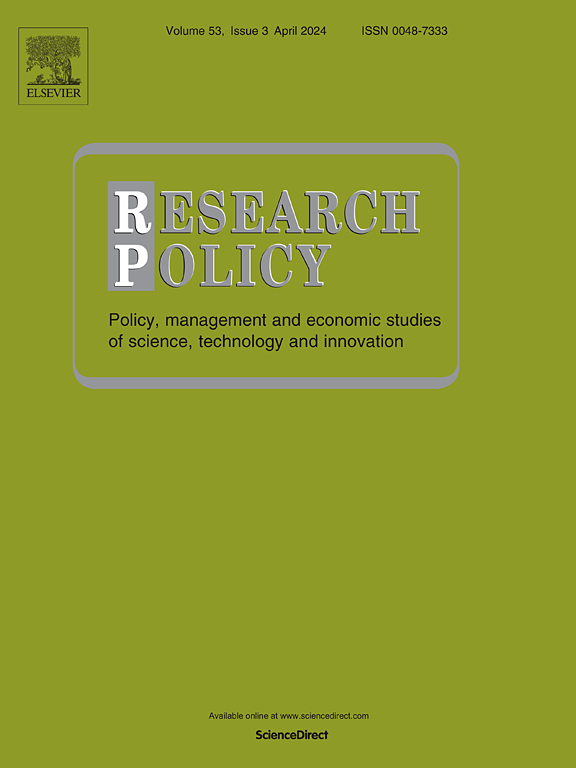诺贝尔奖的 "骄傲 "现象:诺贝尔奖发现及其认可度分析
IF 7.5
1区 管理学
Q1 MANAGEMENT
引用次数: 0
摘要
诺贝尔奖被认为是对科学成就的最高认可形式之一,赋予获奖者巨大的声望。由于获奖与发现之间存在很大的时间差,诺贝尔奖授予了与发现地以外的机构和国家有关的个人。将我们的研究与追求地位的文献结合起来,我们将机构甚至国家对诺贝尔奖不精确的、有时是过度的占有定义为 "诺贝尔'骄傲'现象"。我们的实证分析侧重于 2024 年之前 350 个诺贝尔医学奖、物理学奖和化学奖中每个奖项的 653 项发现的时间和地点。大约三分之一的诺贝尔奖获得者来自其他机构或国家。此外,诺贝尔奖的创造力高度集中,80%以上的发现都是在五个国家完成的。这些发现为诺贝尔奖获得者的人口统计、地理和历史动向以及机构隶属关系提供了新的视角,并对机构和国家层面的研究政策产生了影响。本文章由计算机程序翻译,如有差异,请以英文原文为准。

The Nobel “Pride” Phenomenon: An analysis of Nobel Prize discoveries and their recognition
The Nobel Prize is considered one of the highest forms of recognition of scientific accomplishment, conferring immense prestige upon its recipients. Given the significant time lag between the award and the discovery, Nobel Prizes are bestowed to individuals associated with institutions and countries other than the original place of the discovery. Contextualizing our research in status-seeking literature, we define the imprecise and sometimes excessive appropriation of Nobel Prizes by institutions and even countries as the “Nobel ‘Pride’ Phenomenon”. Our empirical analysis focuses on the time and location of the 653 discoveries underlying each of the 350 Nobel Prizes in medicine, physics, and chemistry until 2024. About one-third of all Nobel laureates came from another institution or country. Furthermore, Nobel Prize creativity is highly concentrated, with more than 80 % of discoveries made in just five countries. These findings cast new light on the Nobel laureates' demographics, geographic and historical movements, and institutional affiliations, and have implications for research policy at institutions and national levels.
求助全文
通过发布文献求助,成功后即可免费获取论文全文。
去求助
来源期刊

Research Policy
MANAGEMENT-
CiteScore
12.80
自引率
6.90%
发文量
182
期刊介绍:
Research Policy (RP) articles explore the interaction between innovation, technology, or research, and economic, social, political, and organizational processes, both empirically and theoretically. All RP papers are expected to provide insights with implications for policy or management.
Research Policy (RP) is a multidisciplinary journal focused on analyzing, understanding, and effectively addressing the challenges posed by innovation, technology, R&D, and science. This includes activities related to knowledge creation, diffusion, acquisition, and exploitation in the form of new or improved products, processes, or services, across economic, policy, management, organizational, and environmental dimensions.
 求助内容:
求助内容: 应助结果提醒方式:
应助结果提醒方式:


